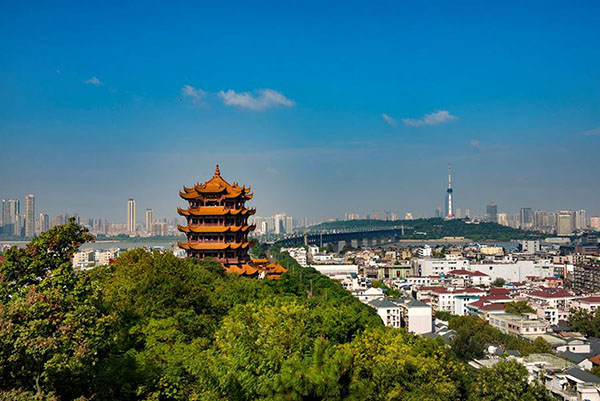
Yellow Crane Tower [Photo/Chinaculture.org]
Central China's Hubei province, the cradle of the ancient Chu culture, is a place with profound cultural heritage and rich tourism resources.
Hubei is home to several UNESCO World Heritage Sites, such as the Shennongjia Nature Reserve and the Ancient Building Complex in the Wudang Mountains. It also holds many important rivers, including the magnificent Yangtze River, widely regarded as the mother river of the Chinese nation, and the long, clear and rippling Han River.
Yellow Crane Tower, Wuhan
Wuhan, Hubei province, is home to ethereal mountains and crystal lakes, yet Yellow Crane Tower is the centerpiece of local tourism.
Yellow Crane Tower is one of the most renowned towers in the southern domain of the Yangtze River. Its cultural significance led to its being made the symbol of Wuhan city. During the Tang Dynasty (618-907), many popular poems were written in praise of the tower.
From the top of the tower, visitors are treated to a fabulous panoramic view of the Yangtze River and the surrounding buildings of Wuhan.

[Photo/Chinaculture.org]
Shennongjia Nature Reserve
The Shennongjia Nature Reserve covers an area of 45.4 square kilometers and was approved as Shennongjia Global Geopark in 2013. It was listed as a world heritage site by UNESCO in 2016.
Thanks to the marvelous natural scenery and famous legends about the mysterious "Wild Man" (Chinese yeti), the scenic area attracts many tourists every year.
Shennongjia was named after a very famous Chinese chief in prehistoric times, Shennong, also known as Yandi. He was believed to be one of the two ancestors of the Chinese people. Shennong invented crockery, discovered herbal medicine, and taught his people how to cultivate crops. To commemorate his great work, he became the namesake for the land of Shennongjia.
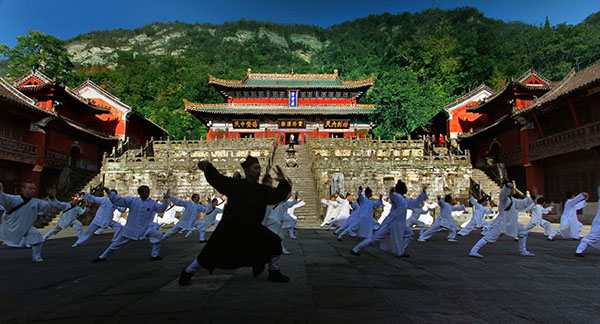
[Photo/Chinaculture.org]
Wudang Mountains, Shiyan
The famous Wudang Mountains Scenic Area is located in Shiyan city, renowned for its magnificent ancient buildings and appealing natural landscape.
In 1994, the ancient buildings at Wudang Mountains were included on the World Heritage List by UNESCO. The mountain is said to be the birthplace of Chinese Wudang martial arts.
Construction of the ancient buildings started from the Tang Dynasty (618-907). During the reign of Emperor Taizong, the Five Dragon Ancestral Temple was built on the mountains.
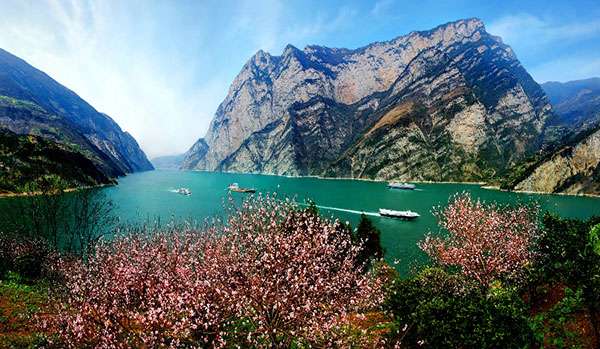
[Photo/Chinaculture.org]
Xiling Gorge
Xiling Gorge, located in Yichang city, is the longest section of the Three Gorges, stretching around 66 km from Zigui's Xiangxi River mouth to the Nanjin Pass.
Renowned for its steep cliffs, rapid currents and scenic sub-gorges, it hosts both the Three Gorges and Gezhouba dams. It's a national 4A-level scenic area celebrated for dramatic natural and cultural landscapes.
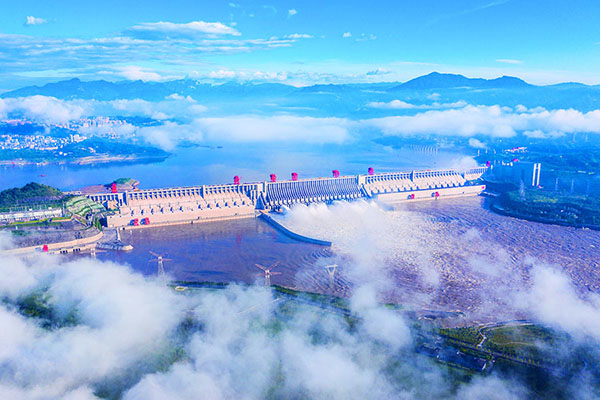
[Photo/Chinaculture.org]
Three Gorges Dam, Yichang
The Three Gorges Dam Project is the short term for the water control project on the Yangtze River. It is located in the middle section of Xiling Gorge near Sandouping town in Yichang city.
Being the world's largest hydropower project, this dam has been the most efficient dam in flood control, the most difficult construction work and the largest migration project in the world.
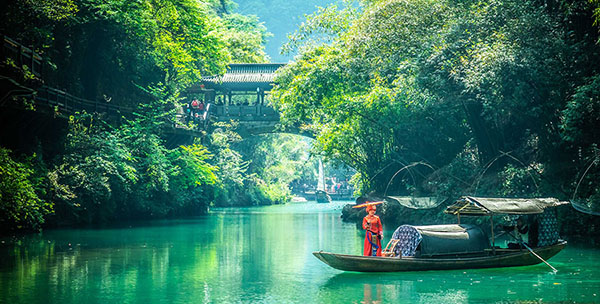
[Photo/Chinaculture.org]
Three Gorges Tribe, Yichang
Three Gorges Tribe in Yichang stands between Gezhouba Water Conservancy Project and the Three Gorges Dam Project along the Yangtze River, in a region of mountains and streams.
The scenic spot consists of two parts: Brook-side village and the Mountain village. The area has been officially designated as a "Protected Center of the Popular Culture and Art of the Three Gorges".
Standing by Xiling Gorge and hearing the roar of the boatmen, visitors will be deeply impressed by this ancient musical sound.
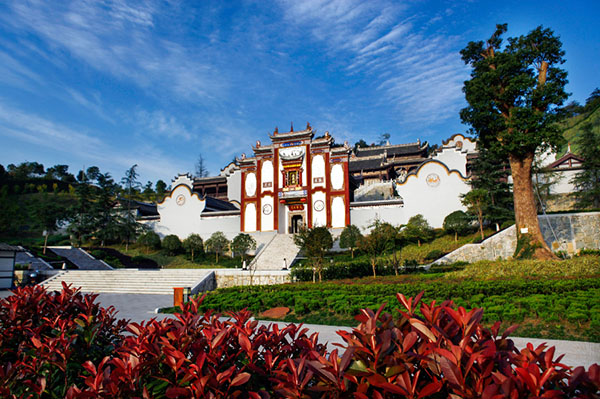
[Photo/Chinaculture.org]
Qu Yuan Temple
Originally built in 820 during the Tang Dynasty (618-907), the Qu Yuan Temple in Zigui county, Yichang city, was constructed in remembrance of Qu Yuan, a patriotic poet from the Warring States Period (475-221 BC).
The temple follows a courtyard style and mainly consists of a gate, a main hall and a rear hall. Within the temple, there is a bronze statue of Qu Yuan, a stele corridor and the Qu Yuan Memorial Hall. Cultural relics excavated in Zigui, as well as the story of Qu Yuan, are exhibited and presented across the two floors of the memorial hall.
Each year, during the traditional Dragon Boat Festival, dragon boat races are held on the Yangtze River along the section near the Qu Yuan Temple.
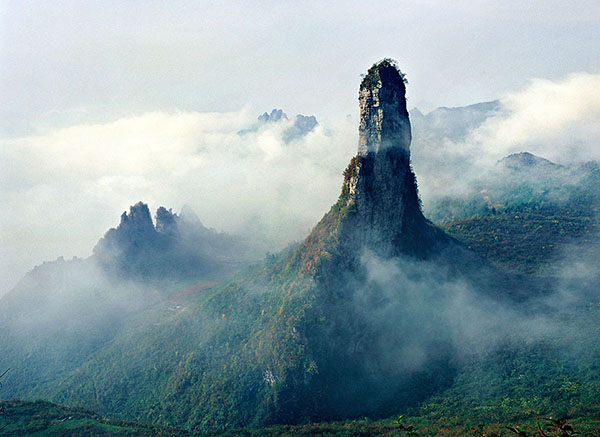
[Photo/Chinaculture.org]
Grand Canyon, Enshi
Wedged between Hunan province, Chongqing municipality and Hubei province, the Grand Canyon scenic spot in Enshi, is the stretch of Qingjiang River Basin and dubbed the "Oriental Colorado Canyon".
The area is famous for its two scenic areas, the Yunlong Ground Fissure and Qixing Village. These two core areas, covering 35 square kilometers, are open to the public and serve as natural museums of limestone karsts, showcasing abundant geological diversity, including limestone pillars, caves and an underground river.
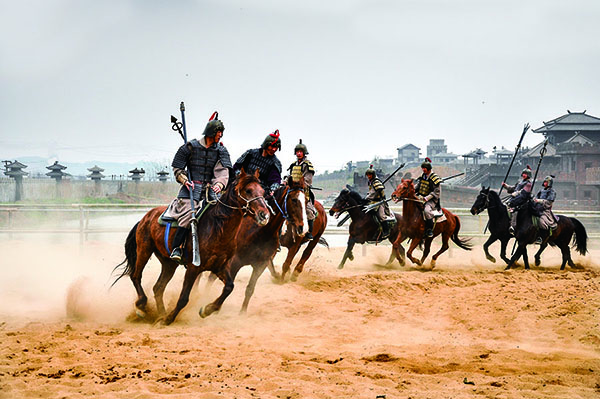
[Photo/Chinaculture.org]
Chibi Ancient Battlefield of the Three Kingdoms, Xianning
Chibi Ancient Battlefield of the Three Kingdoms is where the Battle of Chibi took place. It is one of a few ancient battlefields still remaining in China.
Yijiang Pavilion is on Chibi Mountain along the Yangtze River. It is said that it was the command post of Zhou Yu during the Battle of Red Cliff, from which Zhou could observe Cao Cao's army.
The current pavilion was built in 1936 in traditional style. It is hexagonal, supported by six pillars and with six sharp roof corners.
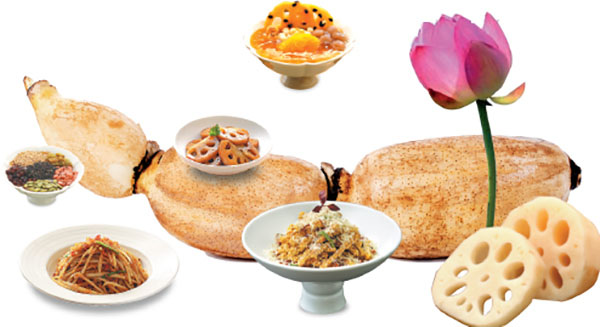
Fried dishes and desserts made of lotus roots are in great demand nowadays. [Photo provided to China Daily]
FOOD
Lotus Root and Pork Rib Soup
Lotus Root and Pork Rib Soup is a beloved dish from Hubei. Celebrated for its nourishing qualities and delicate flavor, it features tender pork ribs simmered with crisp lotus root slices. The soup boasts a mild sweetness and a light, savory broth. Rich in nutrients, it's especially enjoyed during autumn and winter for its warming, health-promoting properties.

Customers line up to order hot dry noodles cooked by a robot in Wuhan, Hubei province. [Photo provided to China Daily]
Hot-Dry Noodles
Hot-dry noodles are an essential part of the Wuhan diet, commonly eaten by locals for breakfast every day.
They are made by cooking fresh noodles mixed with sesame oil in boiling water. Once the noodles are cooked and cooled, they become pliable. The noodles are then briefly reheated in boiling water, and the process is repeated. After seasoning is added, including spring onions and sauce, the hot-dry noodles are ready to be served.
Wuhan Duck Neck
Wuhan Duck Neck is a famous Hubei street snack, known for its tender, spicy and flavorful braised duck necks. Marinated in a rich blend of spices, it offers a perfect balance of heat and savory taste, beloved by locals and visitors alike.
Steamed Wuchang Fish
With a history of over 1,700 years, Steamed Wuchang Fish is a traditional dish in Wuhan. This freshwater fish, when steamed together with mushrooms, bamboo shoots and chicken soup, retains both its original fresh flavor and nutrients. In many local restaurants, you can find this specialty on the menu.
 Editor:Qiu Xiaochen
Editor:Qiu Xiaochen